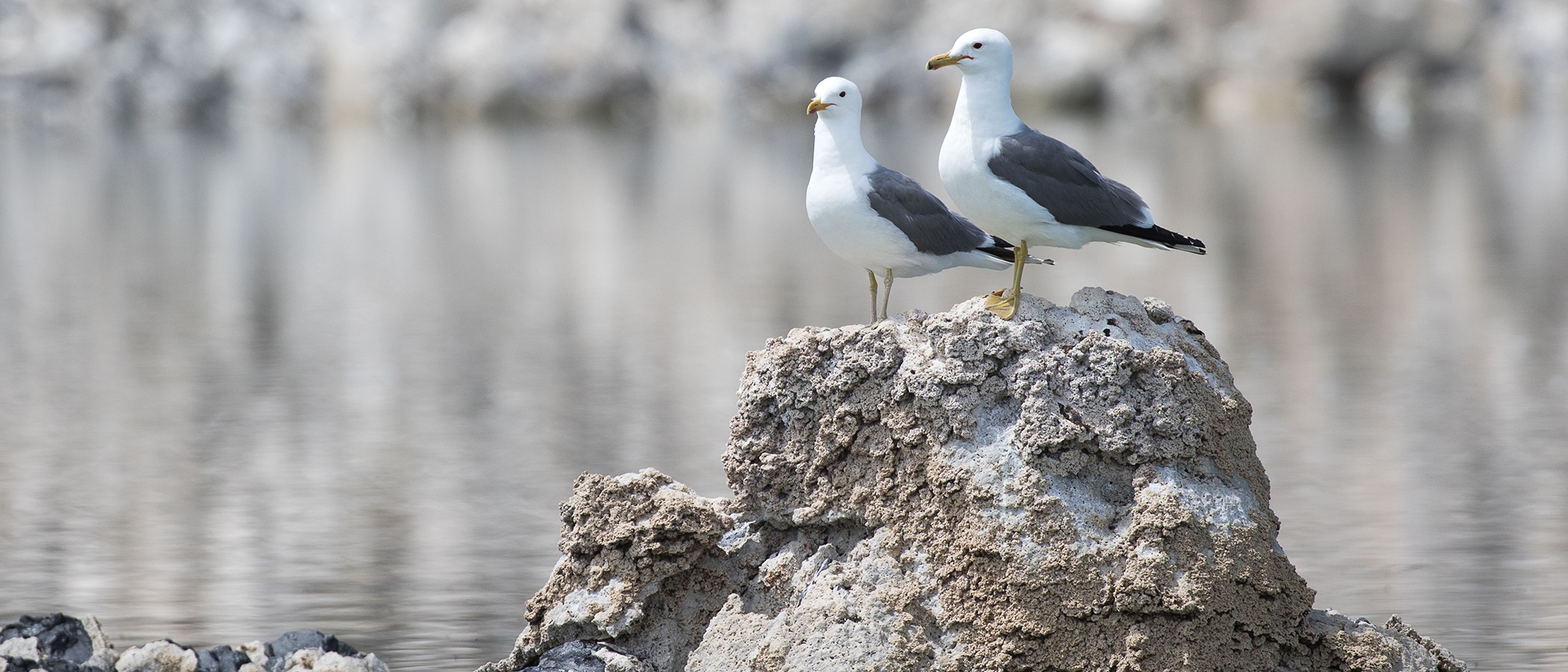
The temporary electrified fence protecting Mono Lake’s nesting California Gulls has been up and running for about three weeks now. After a long and snowy winter the gulls’ calls signal spring’s arrival, and it’s gratifying to know that as they build nests and lay eggs out on the islands, they are protected from coyote predation.
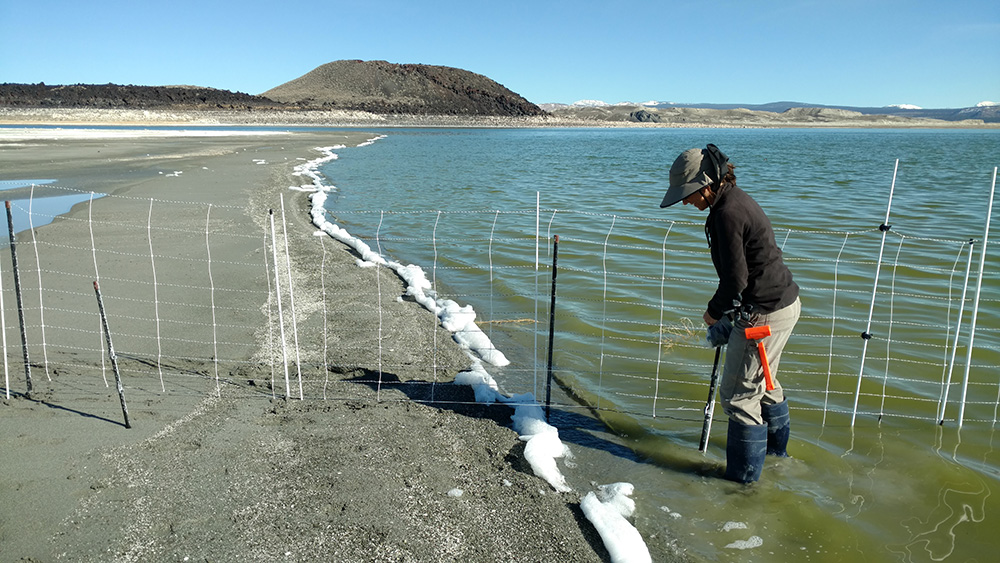
The fence stretches for about one mile across the landbridge, and is made up of five sections that overlap—an electrified long middle section, two shorter electrified sections at the ends near the water’s edge, and two passive sections at the ends that extend out into the water where electrification is not possible. Due to the big winter, Mono Lake is rising gradually right now, and will rise faster in coming months, so routine inspection of the fence and adjustment of the ends is important as the watery moat that should naturally separate gulls from coyotes grows in size. However if lake water were to lap up and short out one of the electrified end sections, the majority of the fence would remain charged.
Follow-up visits show that everything is working well and holding up to the Mono Basin’s weather so far. The fence has withstood several snowstorms and periods of intense wind exceeding 60 miles per hour. Wildlife cameras have yet to document a coyote encountering the fence, but they can’t cover the full fence length and there are no signs that coyotes have made it past the barrier.
As a reminder—a one-mile radius around Mono Lake’s islands is closed to people from April 1 to August 1 each year to protect nesting birds. The area where the fence is located is included in this closure and the fence maintenance team has special permission to work the fenceline. We will be bringing you updates and photos about the fence throughout the nesting season, so if you’re visiting Mono Lake this year, please do not include a trip to the landbridge in your itinerary.
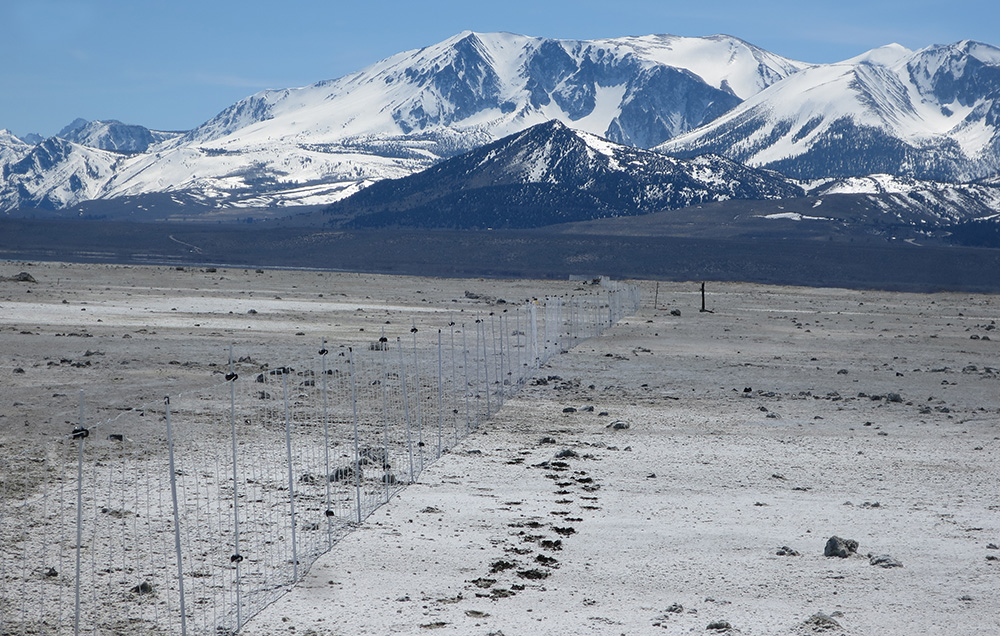
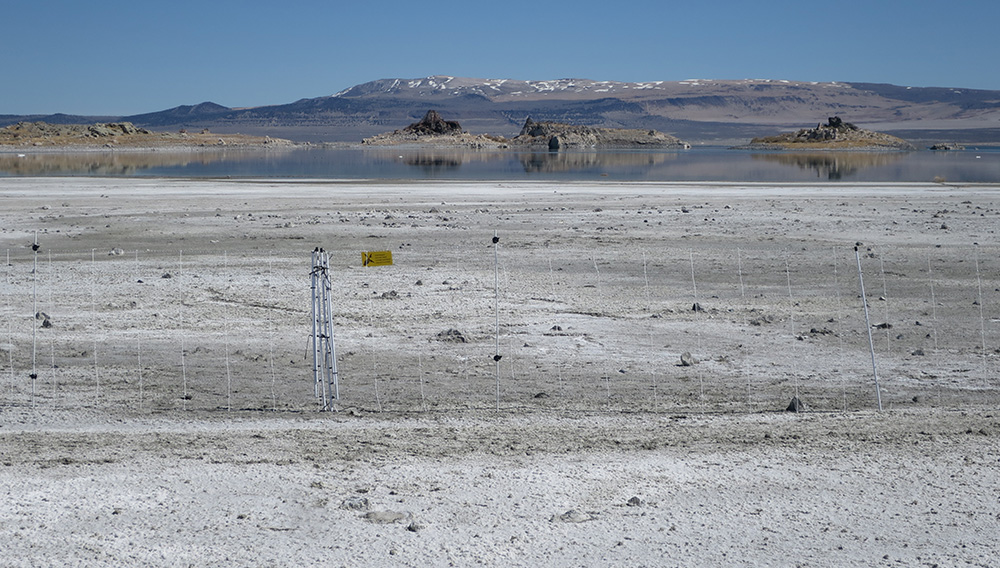
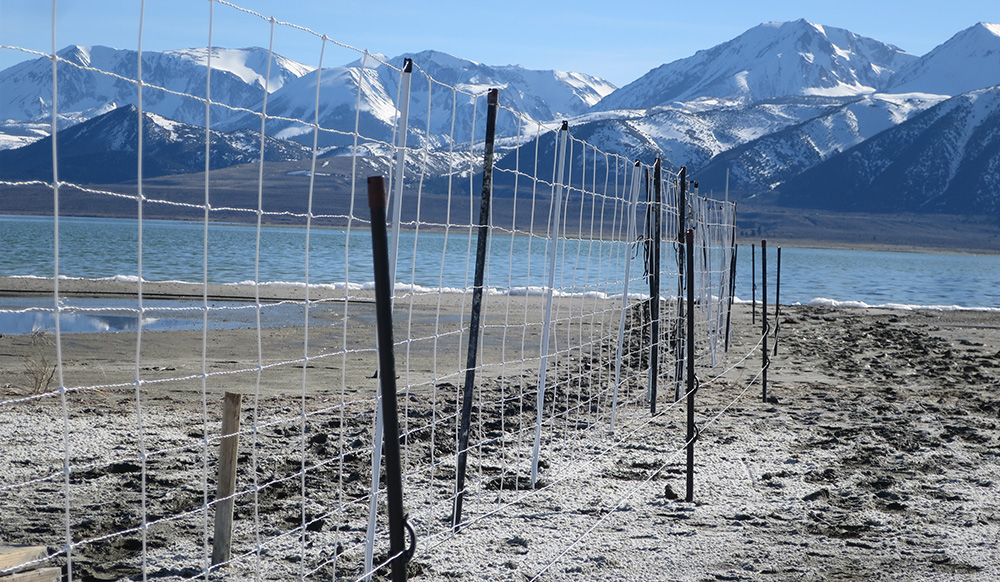
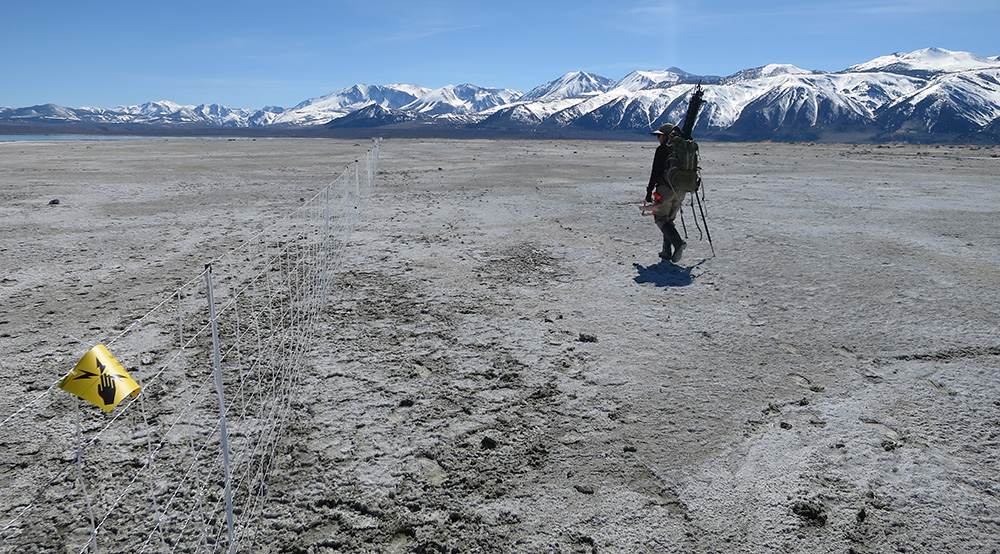
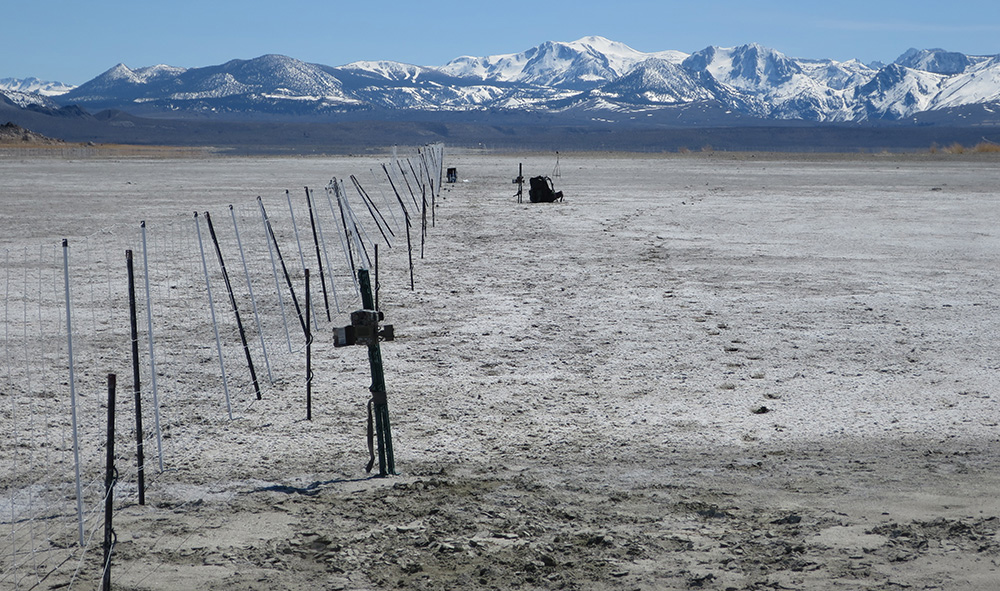
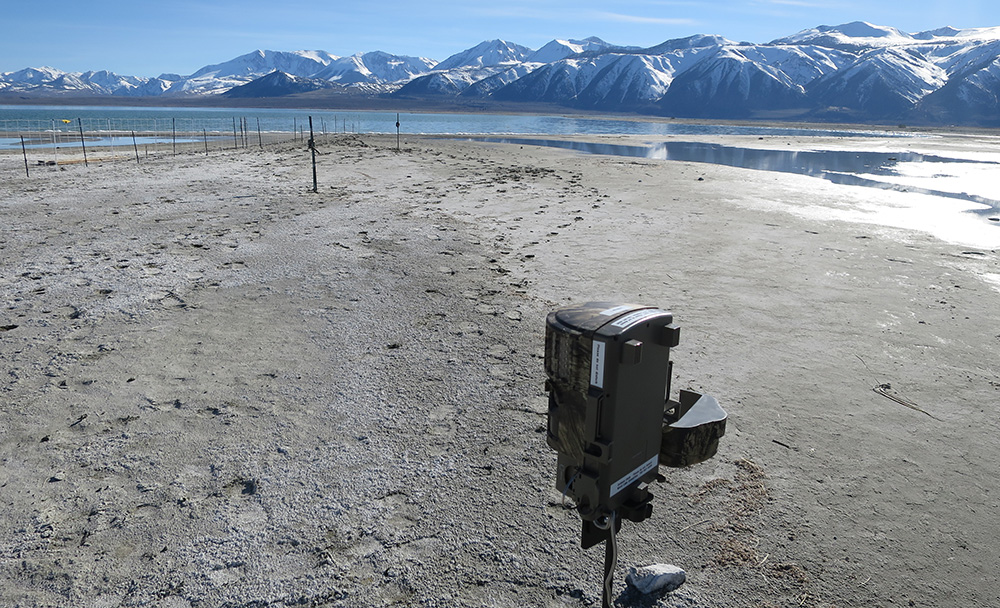

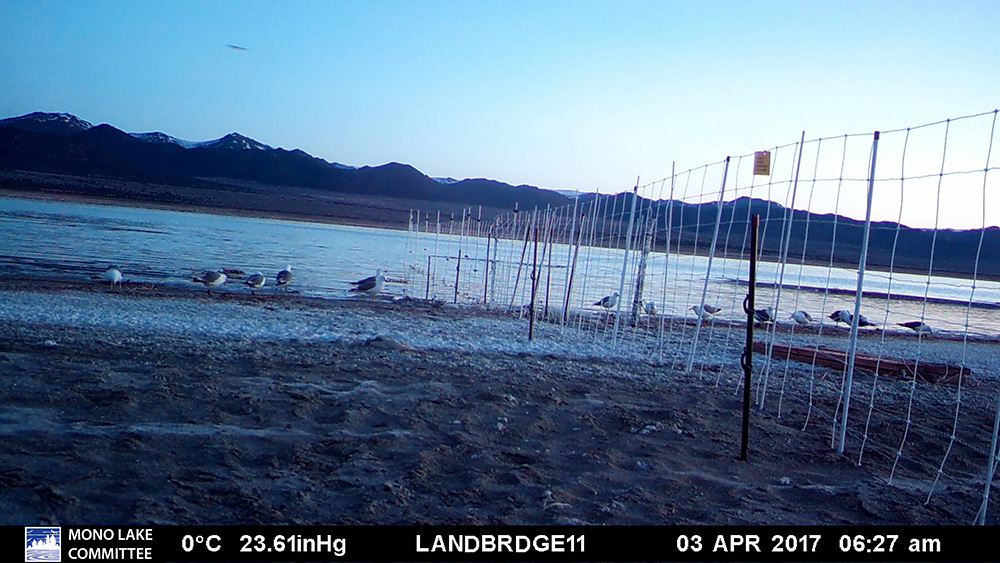
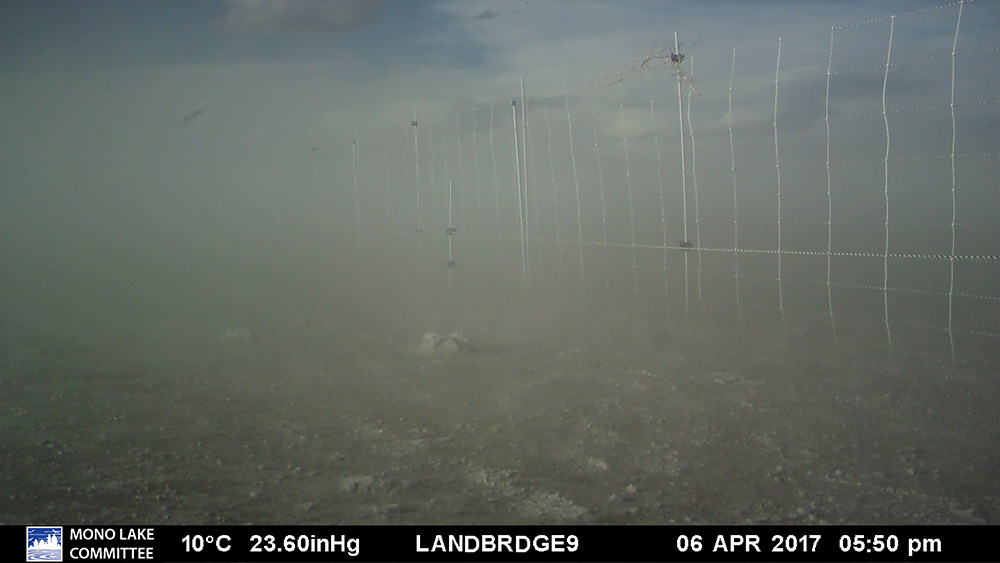
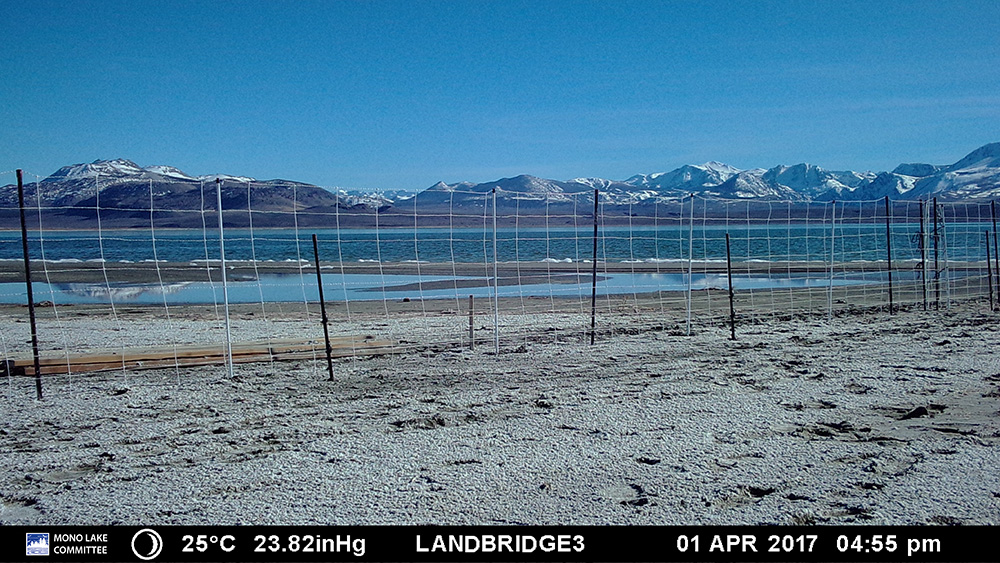
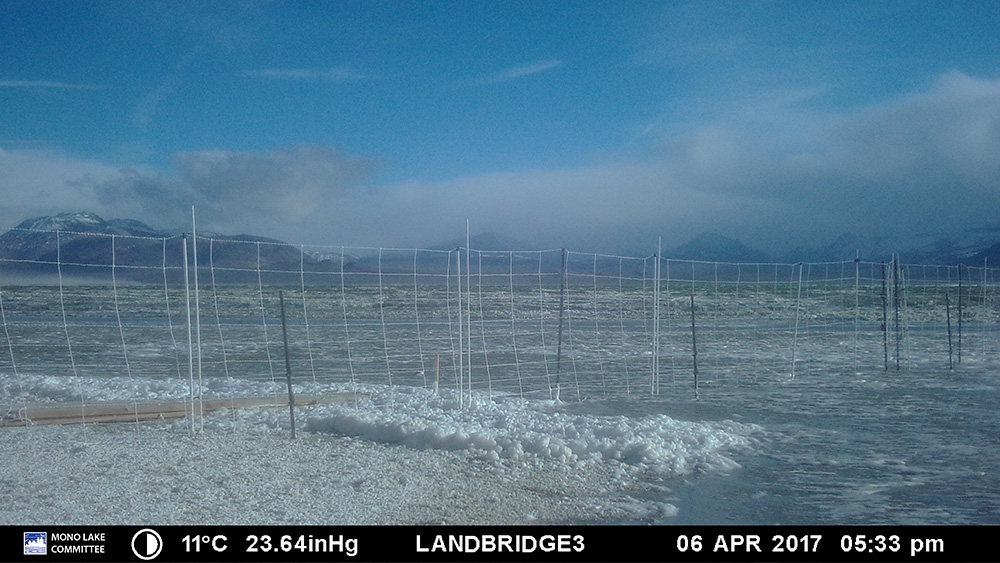
Top photo courtesy of Point Blue Conservation Science.
